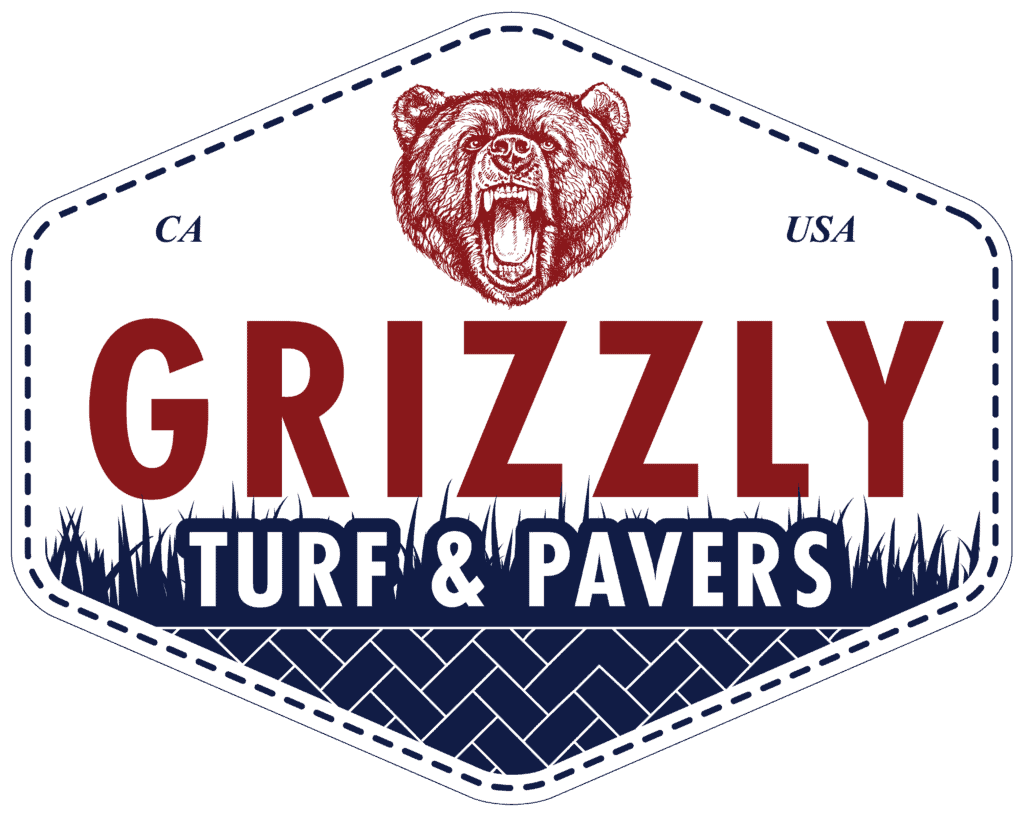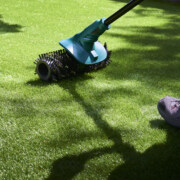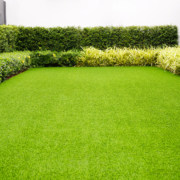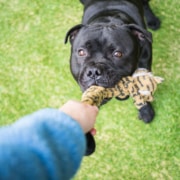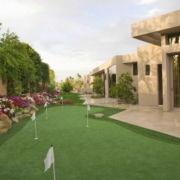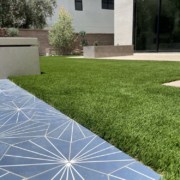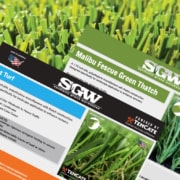Cleaning Artificial Grass
Every day, more homeowners are switching to artificial turf with help from Grizzly Turf & Pavers, the leading artificial grass installer in Southern California. We constantly hear reviews from our customers about how easy their synthetic grass is to take care of compared to their previous natural grass lawn!
While you won’t need to worry about mowing, watering or fertilizing your synthetic turf, It’s worth noting that you’ll still need to give it a little TLC to keep it looking its best. By following these three essential steps, you’ll be sure to have a clean, green artificial grass surface for years to come!
Prevent Matting by Cross-Brushing Your Artificial Turf
Over time, your artificial grass blades will experience matting – the flattening of your blades due to foot traffic, furniture or excessive use. Matting can cause issues with your artificial turf’s drainage, resulting in water buildup and bacteria growth.
Preventing matting is easy – just use an artificial grass brush or rake to cross-brush your blades. This will keep your blades standing upright and help remove any debris, such as fallen leaves or tree branches. When cross-brushing your synthetic turf, be sure to use a brush with synthetic bristles to prevent long-term damage to your lawn.
Dogs are Fun – Their Waste Isn’t
While it’s well-established that dogs are our best friends, it doesn’t seem to feel that way when it comes to cleaning up after them. If neglected, pet waste – both solid and liquid – can penetrate your synthetic grass surface, resulting in foul odors and bacteria accumulation.
As soon as you see your furry friend doing his “business” on your artificial turf, take action to clean it up. Use a garden hose to wash away urine and let your synthetic turf’s drainage do the rest; pick up solid waste and hose down the affected area to remove any residue. For more pungent odors, use a mixture of equal parts vinegar and warm water to clean and disinfect your artificial grass.
If All Else Fails, Leave it to the Pros
We get it – turf cleaning may not always be feasible with your busy schedule. Between work, taking care of your family and handling unexpected daily challenges, artificial turf maintenance can become one of those things you want to do but simply can’t find the time to get done. If that’s the case, the solution is simple – let a professional handle it!
At Grizzly Turf & Pavers, we partner with TurFresh, the trusted name in turf maintenance, to help our customers find a turf cleaning solution that best fits their needs. Professional artificial grass maintenance services like TurFresh have everything they need to re-bloom your turf blades, top-up your infill and disinfect your artificial grass, leaving it looking as good as the day it was installed.
